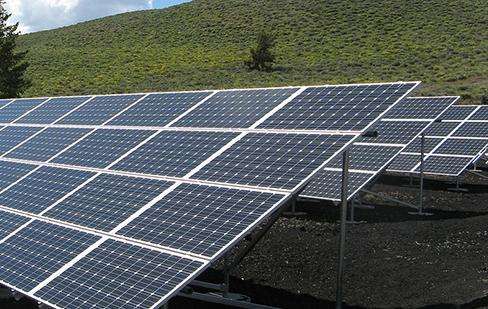In short, a diesel generator runs a generator. In the cylinder, the clean air filtered by the air filter is fully mixed with the high pressure atomized diesel fuel injected by the injector. Under the upward pressure of the piston, the volume decreases and the temperature increases rapidly, reaching the ignition point of. diesel fuel. Diesel ignites, the gas mixture burns violently, rapidly expands in volume and pushes the piston down, which is called "work".
Each cylinder does work in a certain order, and the thrust acting on the piston becomes the force that causes the crankshaft to rotate through the connecting rod, thus causing the crankshaft to rotate. By installing the brushless synchronous alternator coaxially to the crankshaft of the diesel generator, the rotation of the diesel generator can be used to drive the generator rotor. Using the principle of “electromagnetic induction”, the generator will produce an induced electromotive force. a closed load circuit can produce current.
The basic structure of a diesel engine: it consists of cylinders, pistons, cylinder heads, intake valves, exhaust valves, piston pins, connecting rods, crankshaft, bearings and flywheels.
Detailed information
The advantages of diesel engines are high torque and good economic performance. Each operating cycle of a diesel engine also goes through four stages: intake, compression, power and exhaust. However, because the fuel used in diesel engines is diesel, its viscosity is higher than that of gasoline and is not easy to evaporate, and its self-ignition temperature is lower than that of gasoline . Hence, the method of fuel formation and ignition. mixture are different from those of gasoline enginesThis.
The main difference is that the mixture in the diesel engine cylinder is ignited by compression rather than ignited. When the diesel engine is running, air enters the cylinder. When the air in the cylinder is compressed to the end, the temperature can reach 500-700°C and the pressure can reach 40-50 atmospheres.
When the piston is near top dead center, the engine's high-pressure pump injects diesel into the cylinder at high pressure. Diesel forms fine oil particles and mixes with high pressure and high pressure. -air temperature. The diesel mixture burns on its own and expands violently. It generates explosive force and pushes the piston down to do the work. At that time, the temperature can reach 1900-2000°C and the pressure can reach 60-100 atmospheres. The torque generated is very large, which is why diesel engines are widely used in large vehiclesare diesel.
Baidu Encyclopedia - Diesel Engine
Baidu Encyclopedia - Diesel Generator
A generator generally consists of a stator, a rotor, an end cover and bearings and other components.
The stator consists of the stator core, wire windings, machine base and other structural parts that secure these parts.
The rotor is composed of a rotor core winding (or magnetic pole, magnetic yoke), retaining ring, center ring, slip ring, a fan and a rotating shaft.
There are many types of generators. In terms of energy, they are divided into thermal generators, hydraulic generators, etc. ; In principle, they are divided into synchronous generators, asynchronous generators, single-phase generators and three-phase generators. In terms of generation method, they are divided into steam turbine generators, hy generatorsdraulics, diesel generators, gasoline generators, etc.
The working principle is that the bearings and end covers of the generatorThe stator and the rotor are connected and assembled, so that the rotor can rotate in the stator and carry out the line cutting movement of magnetic forces, thereby generating an induced electrical potential, which is drawn across the terminals and connected in the circuit. to generate current.














